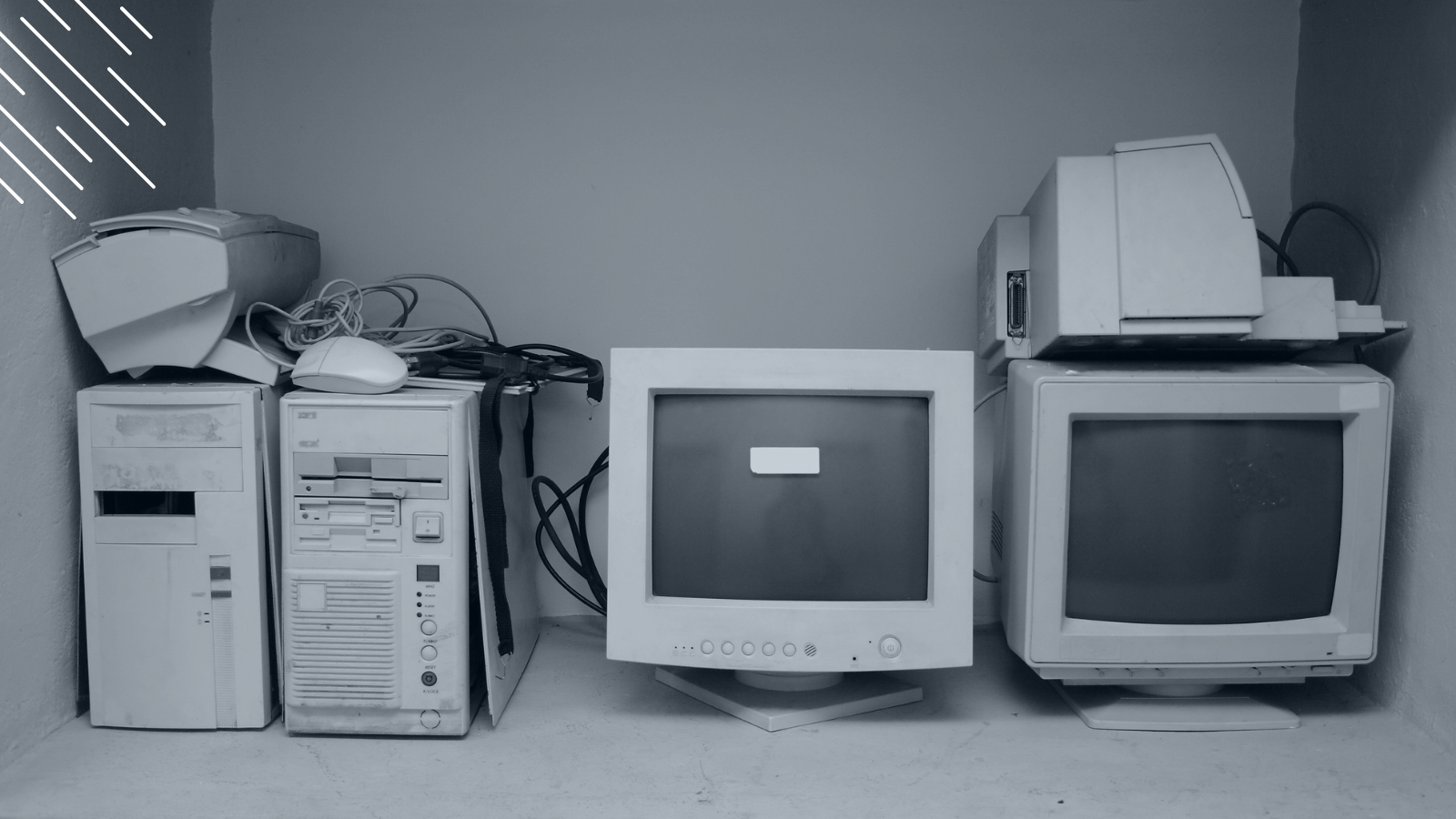
The summer is almost over — which, for a lot of IT managers, means they need to start planning and preparing for upcoming budget rounds in the fall. And unless you are one of the lucky few that saw a spending increase last year and is expecting another bump in the coming year, figuring out the budget you need and what you can achieve with it is a difficult task.
Maybe it helps to know that you are not alone. Global economic uncertainty, currency fluctuations, and Brexit anxiety have put a damper on many IT budgets. In fact, in a recent SpiceWorks survey, IT organizations in the UK say they had to take an average 5% budget cut in 2017 from 2016 — and it's not looking much brighter for 2018.
However, IT organizations are faced with much bigger problems than stagnant budgets. According to Gartner, 85% of enterprises will have at least began rolling out Windows 10 — many citing the security improvements and cloud integration capabilities as their main drivers. However, the same report points out that one in four respondents expects issues with budgeting, as Windows 10 is not perceived as an immediate business-critical project. This is a perfect example of the crux of the Evergreen IT Budget Dilemma which we want to take a closer look at today.

Traditional IT Budget Allocation...
While most organizations employ different approaches to their IT accounting and budgeting process, there are some key similarities. Typically, for most enterprises, IT budgets are divided into three buckets:
- "Keep the Lights On"
- Investment Dollars
- Productivity (Or Savings) Initiatives
The biggest chunk of most IT budgets is dedicated (a.k.a. already committed) to keeping the lights on — meaning maintaining status quo with the current IT environment. It includes all reactive services such as IT help desk, the ongoing costs of support staffing, break-fix activities, moves, adds and changes, software licenses, etc.
On the other hand, the investment dollars and savings initiatives lend themselves more to a project-based budget. Usually, a hardware refresh project, a Windows OS migration, or other major IT Transformation projects would be paid through these dollars. Whilst some of this budget may be already allocated for the year, you will have to apply for the project money by demonstrating business value with the help of a tangible (and often waterproof) business case. For example, you will have to showcase that you can save more than you apply for by reducing headcount, reducing other costs or increasing productivity.
This archaic model of dishing out dollars worked well for decades. But not anymore.
Clash With Modern IT Management Practices, Such As Evergreen IT
As enterprises embrace Digital Transformation, Cloud Computing, Bring-Your-Own-Device policies for employees, and many other initiatives that require increased agility, scalability, and faster change, traditional IT management practices are being swapped out for more modern approaches, such as Evergreen IT or Business-as-Usual.
At Juriba, we use these terms interchangeably and refer to the perpetual and continuous migration, management, and improvement of end-user software, hardware, and associated services such as mailboxes, telephony, file storage, and the infrastructure supporting the technology. Your IT management becomes more liquid and agile as things are fixed and improved upon as needed, not based on a preset schedule of big-bang projects.
Essentially, your job is to create an optimized environment of supportive base technologies, processes, and procedures, as well as an organizational environment that allows you to react to events (e.g., an employee leaving or joining the company, a device breaking), rather than plan in advance. Therefore, hardware only gets swapped out or devices only upgraded to a new OS version as needed (e.g., when they reach End-of-Life, break, or malfunction), or via a pro-active 'opt-in' type methodology that informs the user base when they are ready for upgrade. This has not only major implications on how you manage things but also on how you budget for them.
(Read more about why Evergreen IT should be part of your long-term IT strategy.)
The Evergreen IT Budget Dilemma On The Example Of Windows 10
Given the spending allocation from above, your "maintaining status quo" budget would come from the "Keeping the Lights On" bucket. But what happens to your traditional budget divisions if you now start thinking of major IT transformation initiatives (e.g., hardware refresh) as "Business-as-Usual"? Basically, the project money disappears, while the Keeping the Lights On budget has to carry a much heavier weight.
Let me illustrate this on the example of a Windows 10 migration. Microsoft's marketing — just look at the Forrester Total Economic Impact Of Windows 10 Report — makes us believe that migrating to the new operating system is easy as pie. In fact, it is so simple that you don't need a dedicated project, resources, or extra budget for it. You can simply leverage self-service capabilities through the Windows store and dynamic provisioning for new employees, and you are on your way! Any work associated the upgrade is simply swallowed by the existing teams within their current job role, effectively reducing the Keeping the Lights On bucket, and assuming that the existing resource has both the skills and capacity to take it on. Unfortunately, for the vast majority of larger organizations, this isn't going to be quite as easy.
Business-As-Usual Budget Considerations
The path to creating a successful BAU budget plan capable of supporting this new workload is to figure out how to get your investment dollars into the BAU bucket, and how you can create strategies to make it more efficient to keep the lights on whilst delivering the required upgrade(s). You will need to ask yourself:
- Where are you spending your money? If you cannot answer this question, you will need to implement the right tools and procedures to get an exact understanding of where the money goes. For example, understanding exactly what the existing BAU resources are up to, and whether they are fully utilized. Metrics are key here, because you can only figure out what resource capacity you have by identifying what your resource usage profile looks like.
- Are there any areas for productivity gain? Could you free up some BAU budget by implementing more efficient processes or procedures, or simply reorganize your teams to make them better aligned to the new organizational evergreen requirements
- What tools do you have in place today to manage your Business-as-Usual environment? Do you have the right tooling to provide you with a perpetual baseline of all relevant information required to know what needs updating and when, what the interdependencies are that could be impacting this, and what bottlenecks you might run into? Do you have a central command-and-control system that allows you to coordinate and orchestrate all BAU change efforts enterprise-wide? Do you have appropriate tooling to help with remote computers or deployment of upgrade packages within small branches?
- What is the gap? Now that you know where you are spending the money (what is there) and what tooling, procedures and resources you need, you can determine the delta between the two. Do you need more testers to manage all the required application compatibility testing, can your help desk manage the likely volume of tickets caused by the upgrade work?
Conclusion
In summary, a successful implementation of Evergreen IT requires not only a change in technology, skillsets, and organizational setup, it also has consequences on how you can divide your budget going forward. Your will need to figure out whether or not you will keep a Windows 10 project team as a separate entity or merge them into your Business-as-Usual team — and therefore determine how you will attribute the dollars accordingly.
No matter how you decide, it will be crucial for the sake of team communication and collaboration to have the right tools in place, enabling your entire team to rely on a single version of truth, and manage all actions on a centralized command and control platform like Juriba's IT Transformation Management Platform, Dashworks.
Barry is a co-founder of Juriba, where he works as CEO to drive the company strategy. He is an experienced End User Services executive that has helped manage thousands of users, computers, applications and mailboxes to their next IT platform. He has saved millions of dollars for internal departments and customers alike through product, project, process and service delivery efficiency.
Topics:



![What is a Digital Workplace? [Definition]](https://blog.juriba.com/hs-fs/hubfs/What%20is%20a%20Digital%20Workplace%20%5BDefinition%5D.jpg?width=1600&height=900&name=What%20is%20a%20Digital%20Workplace%20%5BDefinition%5D.jpg)






















